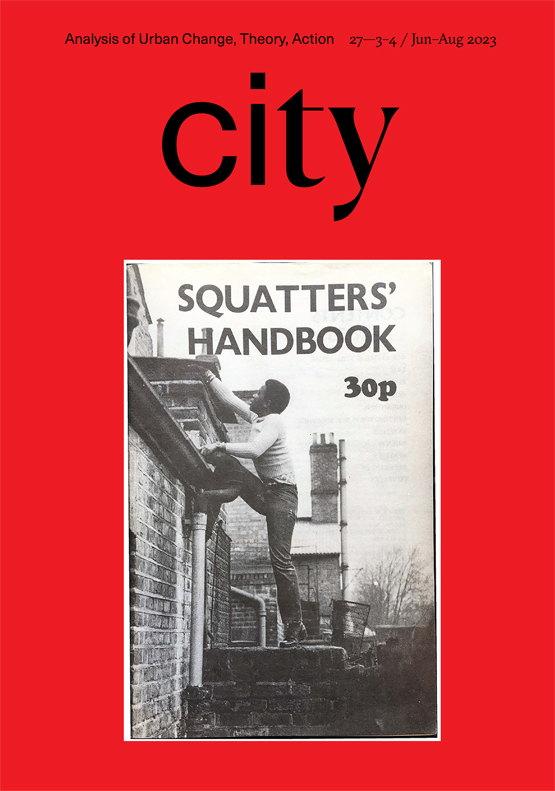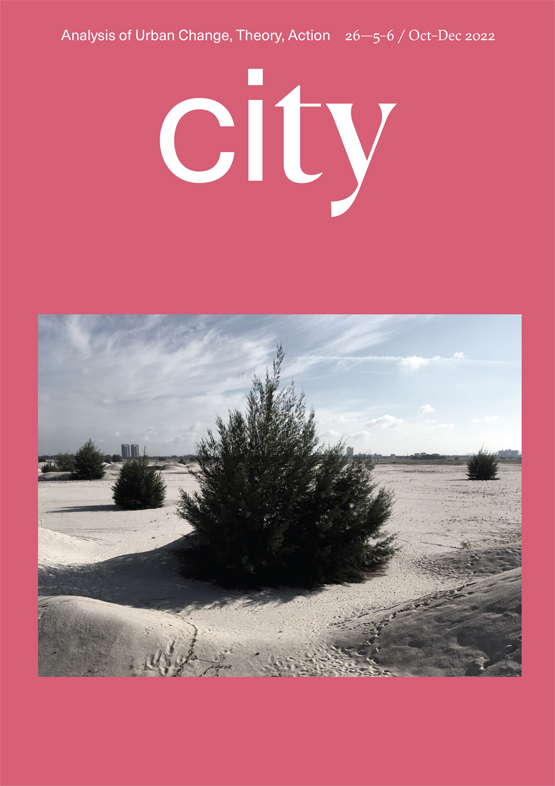founding editor: bob caterrall
editor: city editors
editorial: ‘rural hauntings, urban spectres: lyrical reflections of a border dweller‘ -ulises moreno-tabarez
what is a city? it’s a basic question that concerns us, not just because it’s the title of this journal. as a collective of editors, we do not have a coherent definition; not that one is actually necessary. in fact, we have multiple definitions; some are explicit and others implicit. our plurality is our strength.
or, is it?
the answer may be a resounding ‘yes’ from multiple angles, depending of course on the efficacy of our organisational structure in light of structural demands of everyday life (madden 2022). but the weight of the question persists because it speaks to the rigour and ethics of our editorial practice: how does city define ‘city’? rather than definitions, the pages of city contain multiple trends in critical urban studies. these trends reveal the kinds of struggles we face in defining the kind of city we want to construct and deconstruct. i use this particular word because i enjoy working with the hauntings of deconstruction, its fixity on the particularities of language, especially the negative aspects of presence as articulated in jacques derrida’s (1994) specters of marx. through this lens a symbol gains presence or becomes known by its negative; that is to say, a symbol is defined by what it is not. the negative is defined by its opacity, a vast mystery haunted by the presence of absence (glissant 1997). present before me is the definition of ‘city’ which can be defined through its negative, or its antonym, one might say. as such, the definition of city can be known through the question: what is the antonym of city?
in this editorial i mean to work from the negative of ‘city’ with the assumption that it is not inherently opaque but that its opacity can serve as a generative mystery. i am also relating ‘city’ to the urban, understanding that this relation may fall apart in specific conditions. this is an exploratory exercise of the negative, opacity allows me to get lost despite the mappings i may conjure. the reader, like the writer, will have to embrace this journey taking into consideration that this uncertainty is part of the human experience of working with symbols in all of their iterations. the question, ‘what is a city?’, is my starting point for the exploration that follows. in trying to hold on to this question, i assume the position of a rural border dweller in direct contact with the urban, illustrating thus the symbolic and material weight of the urban. in particular, i’m working through personal experiences in the coastal regions of guerrero, mexico, the geography where i grew up and am now conducting long term ethnographic research. this is not and cannot be an exhaustive exercise, for borders are geographical and historical. ultimately, my purpose is to provoke reflection about geopolitical implications of the basic assumption of how the urban is defined in our pages and beyond.
click here to read the full editorial.





